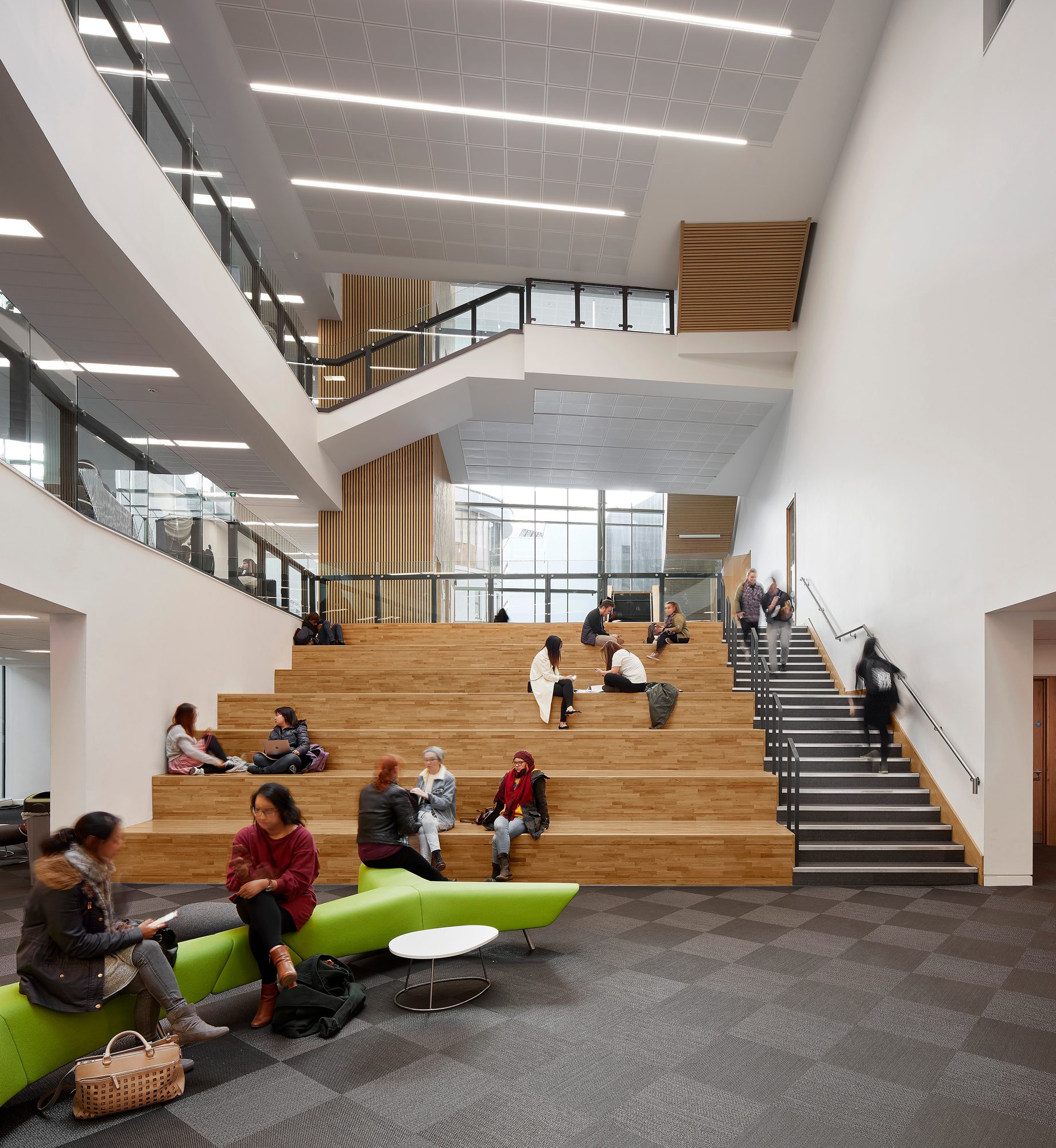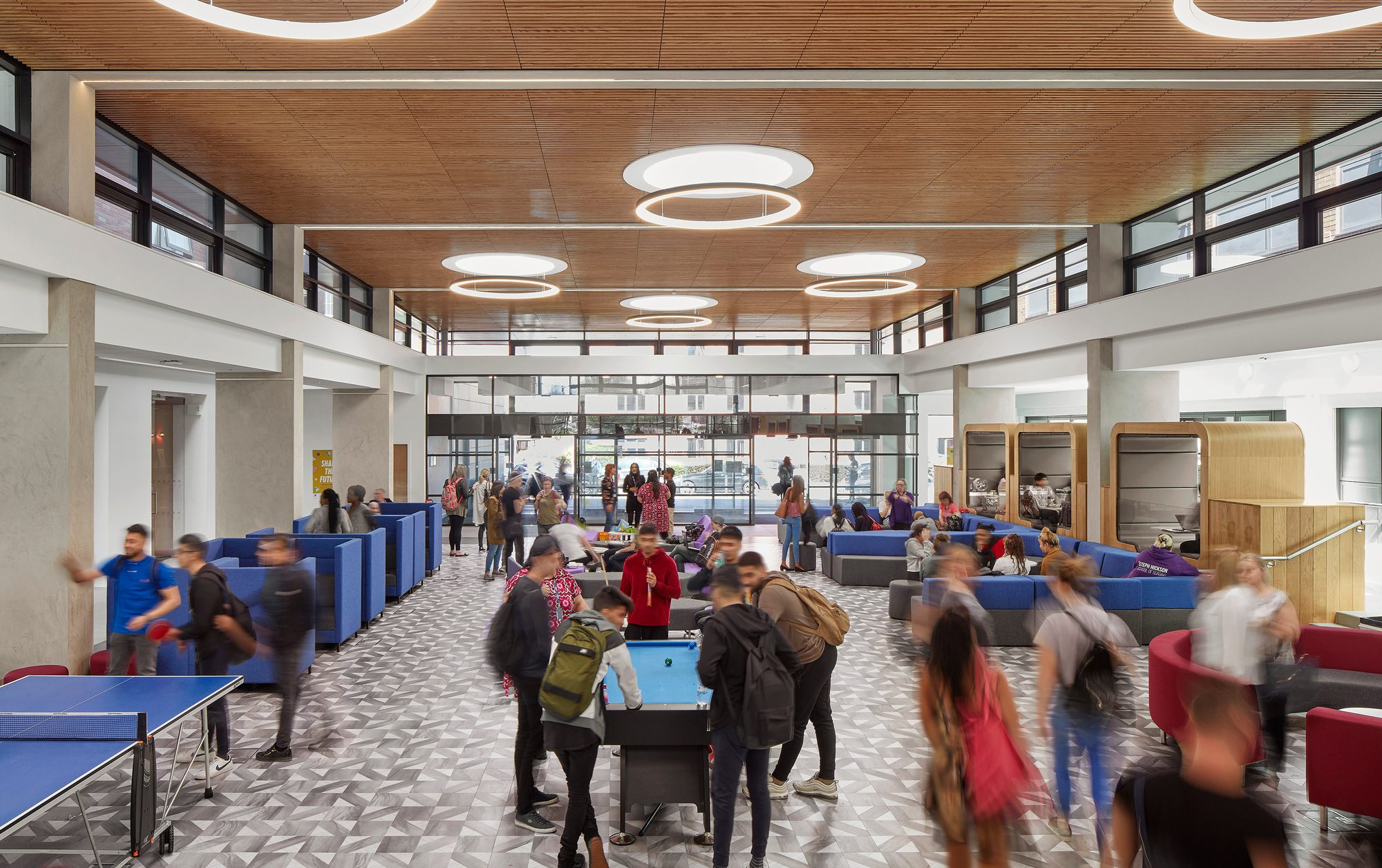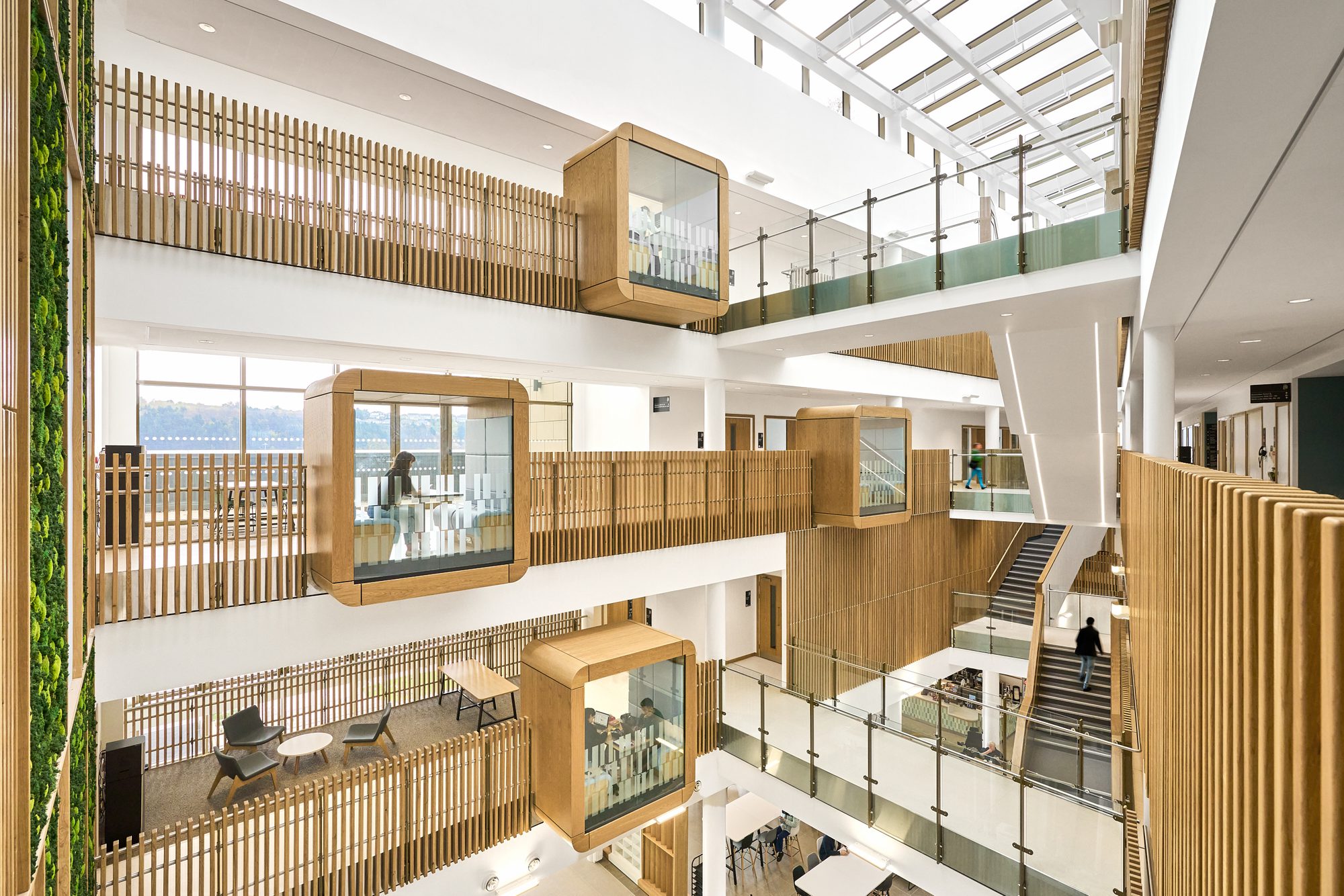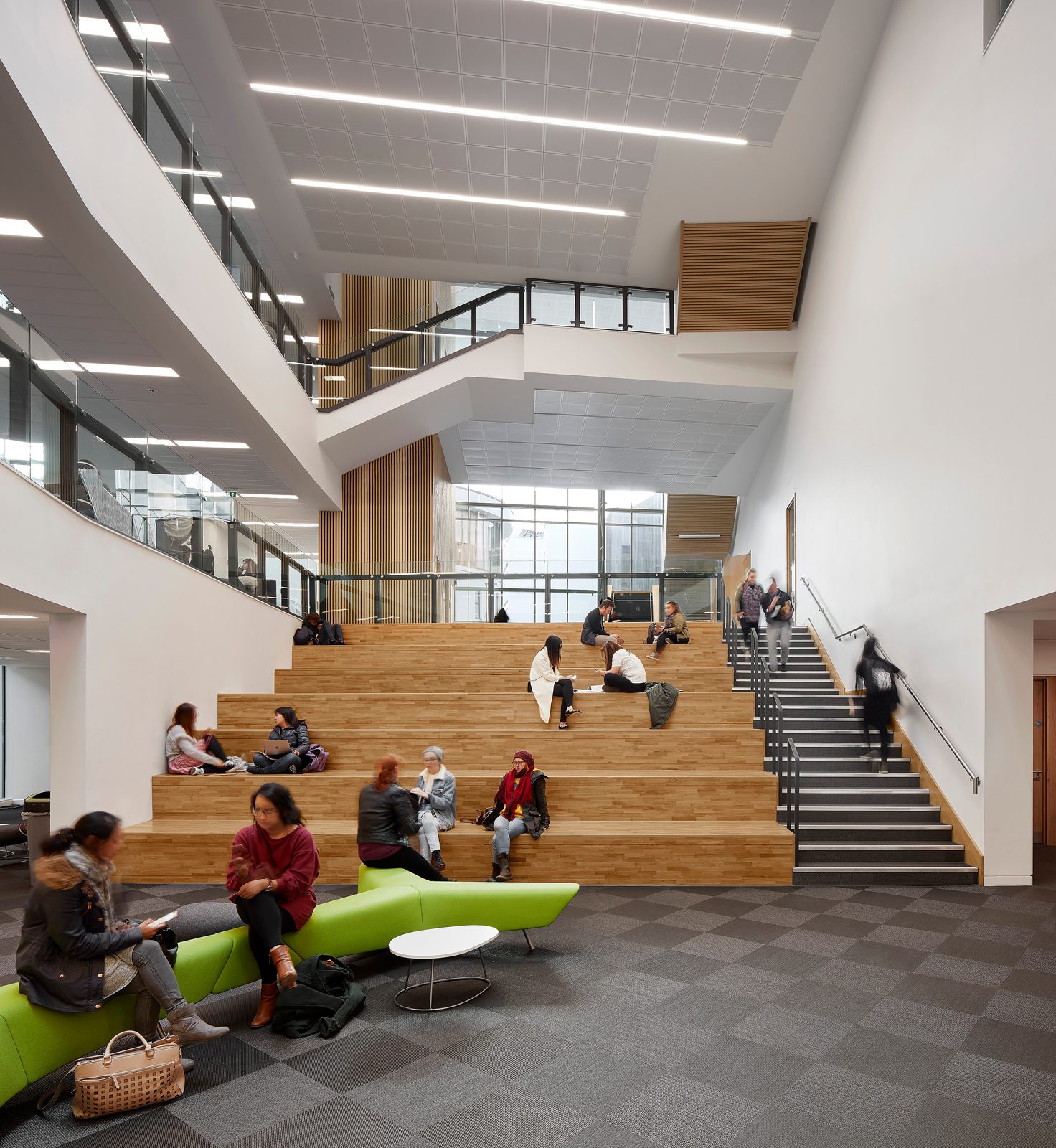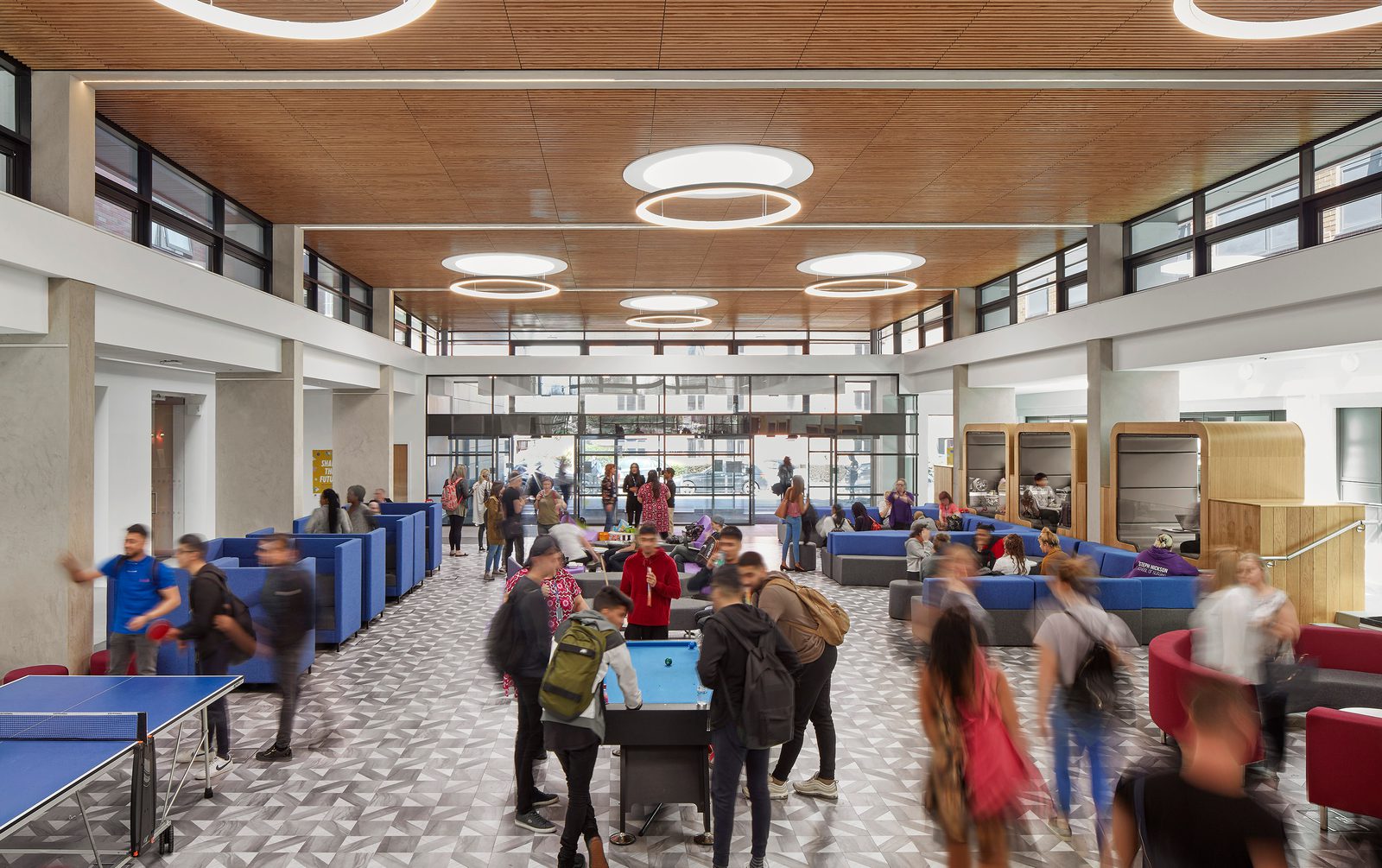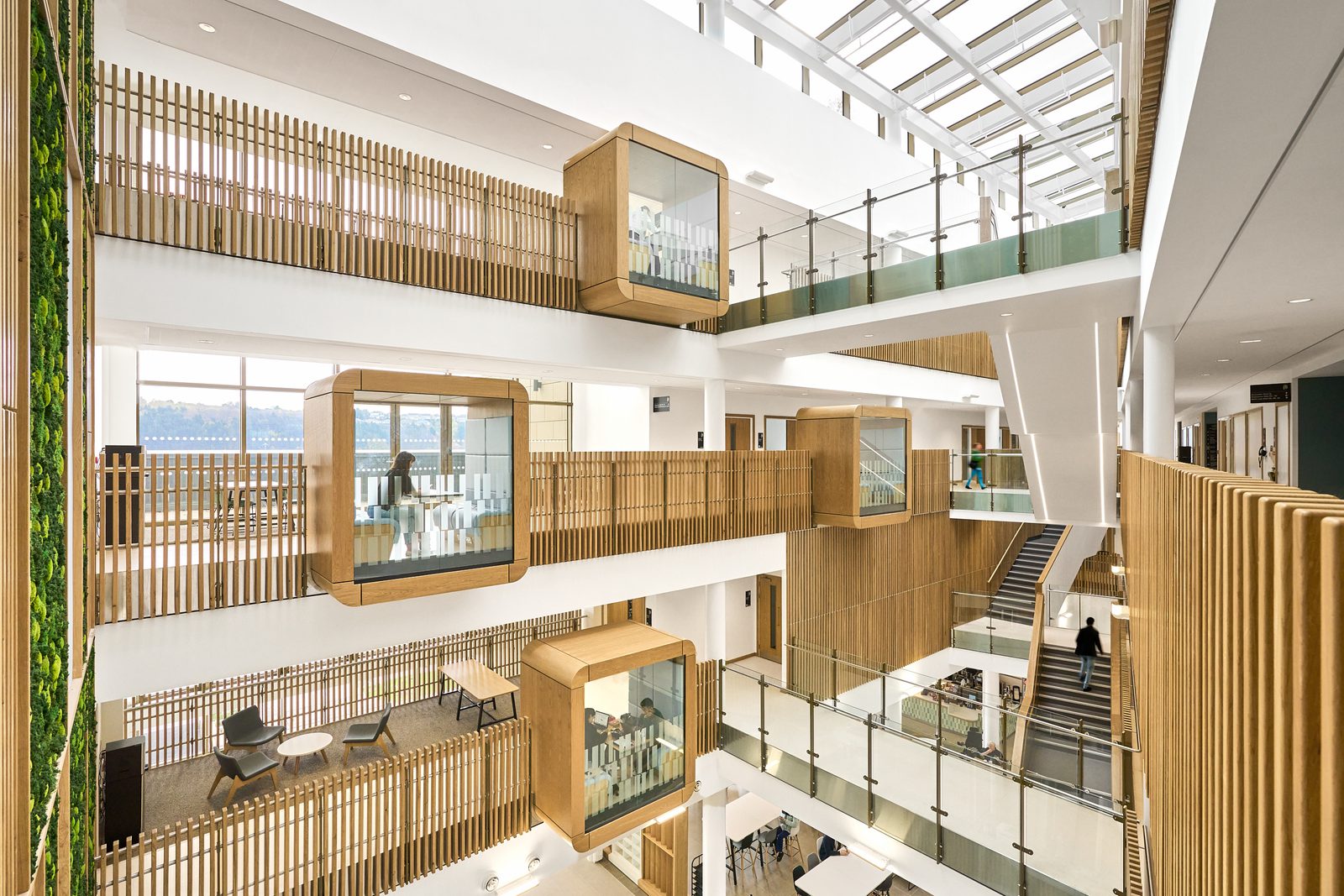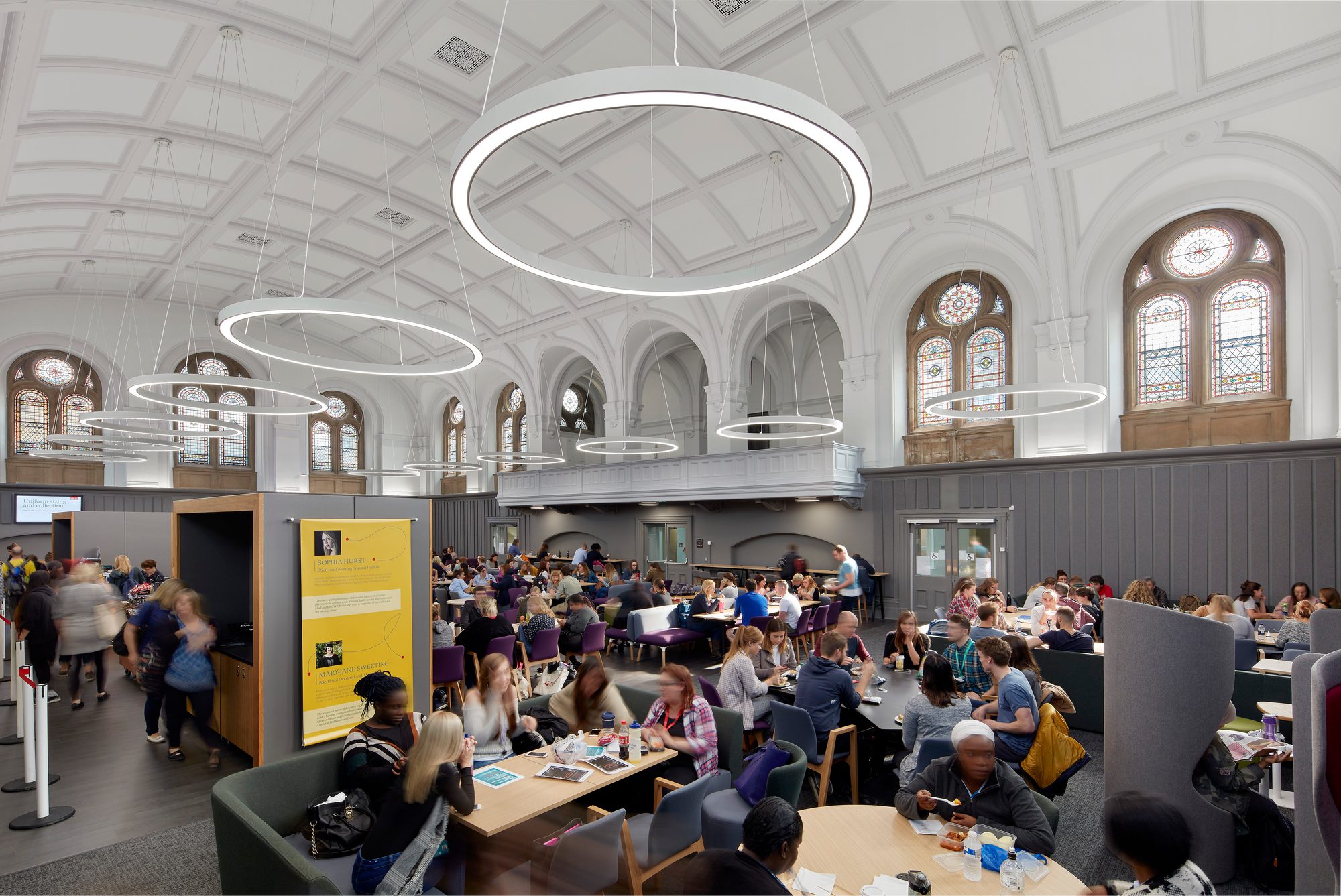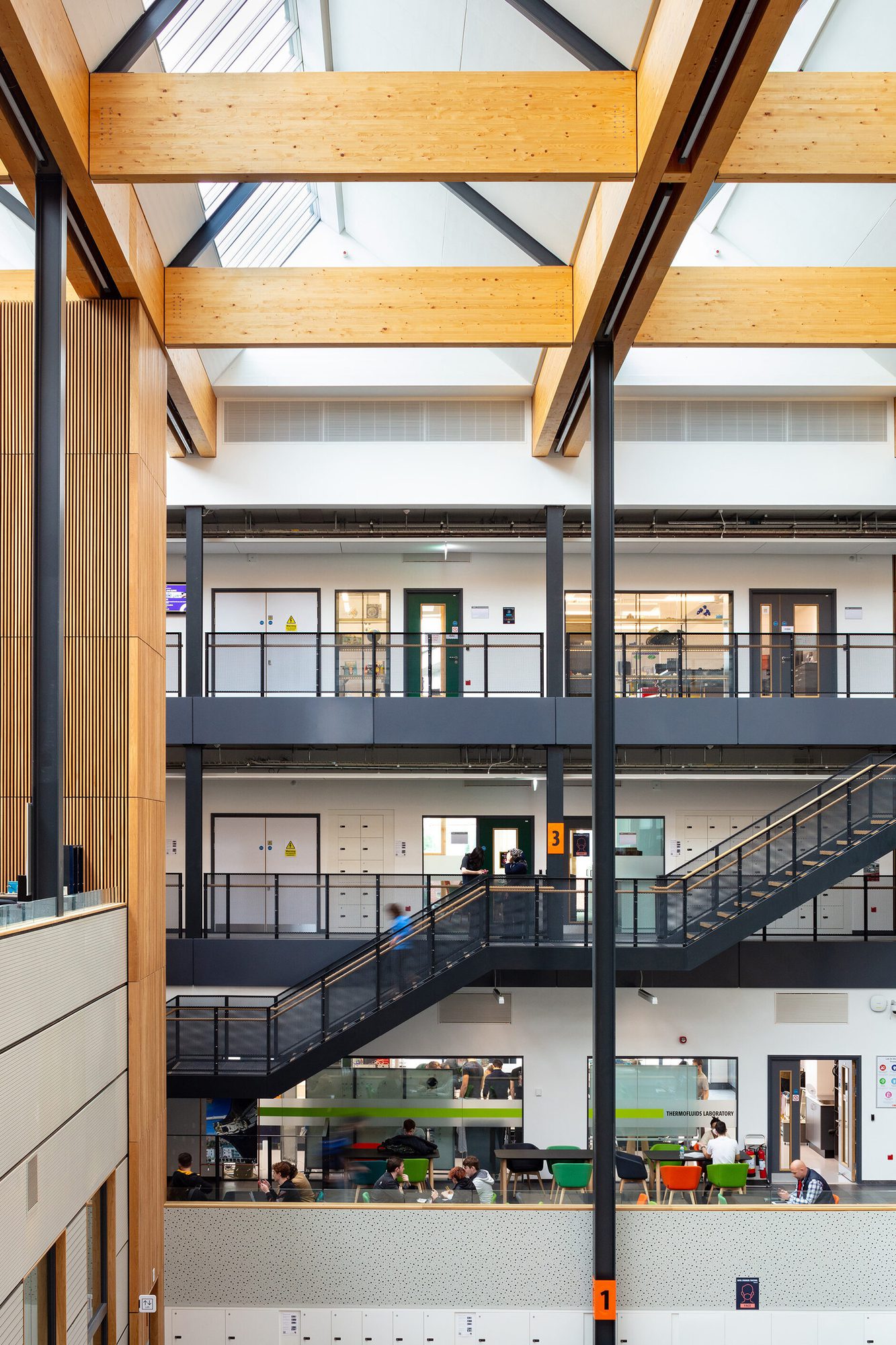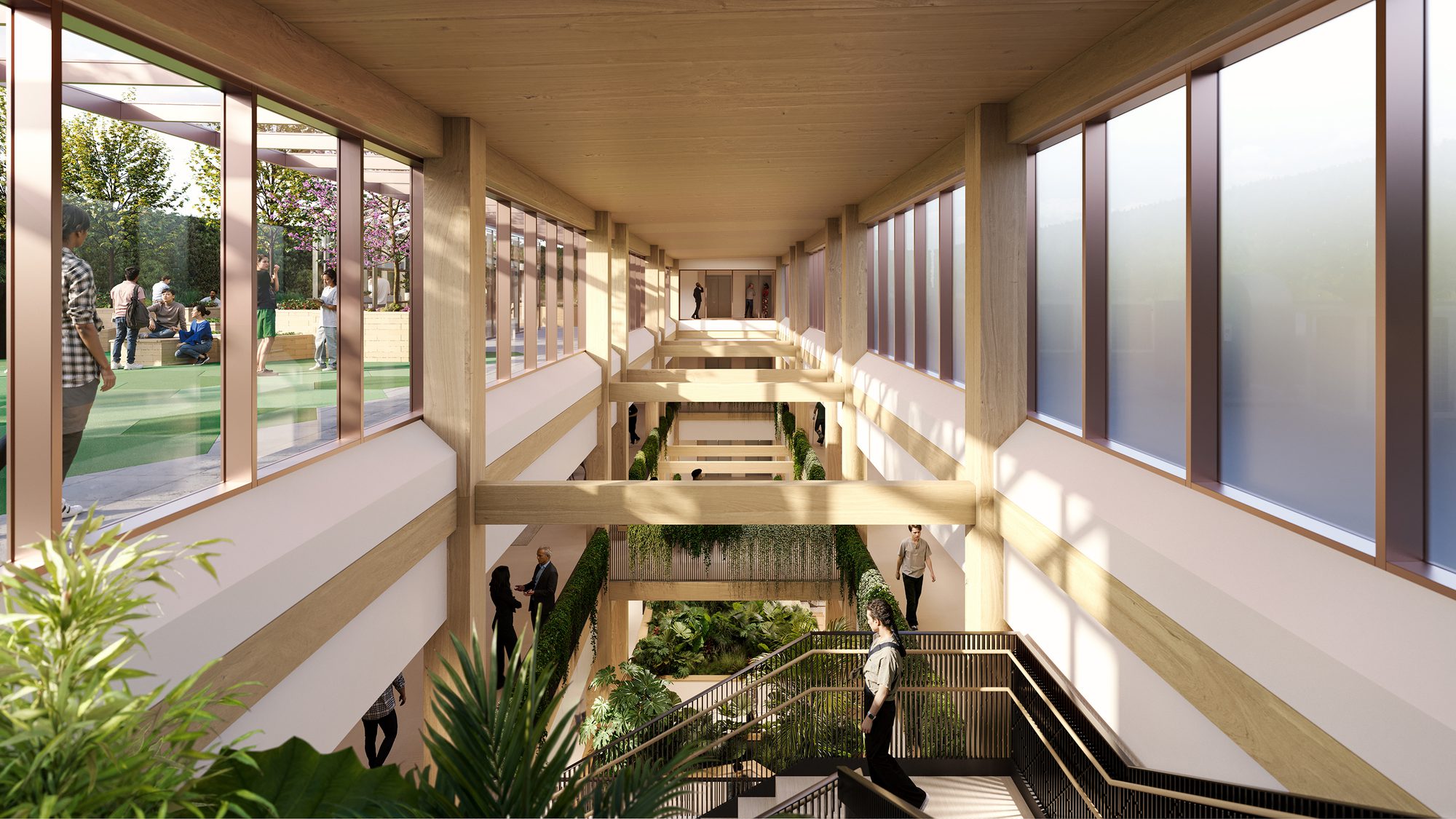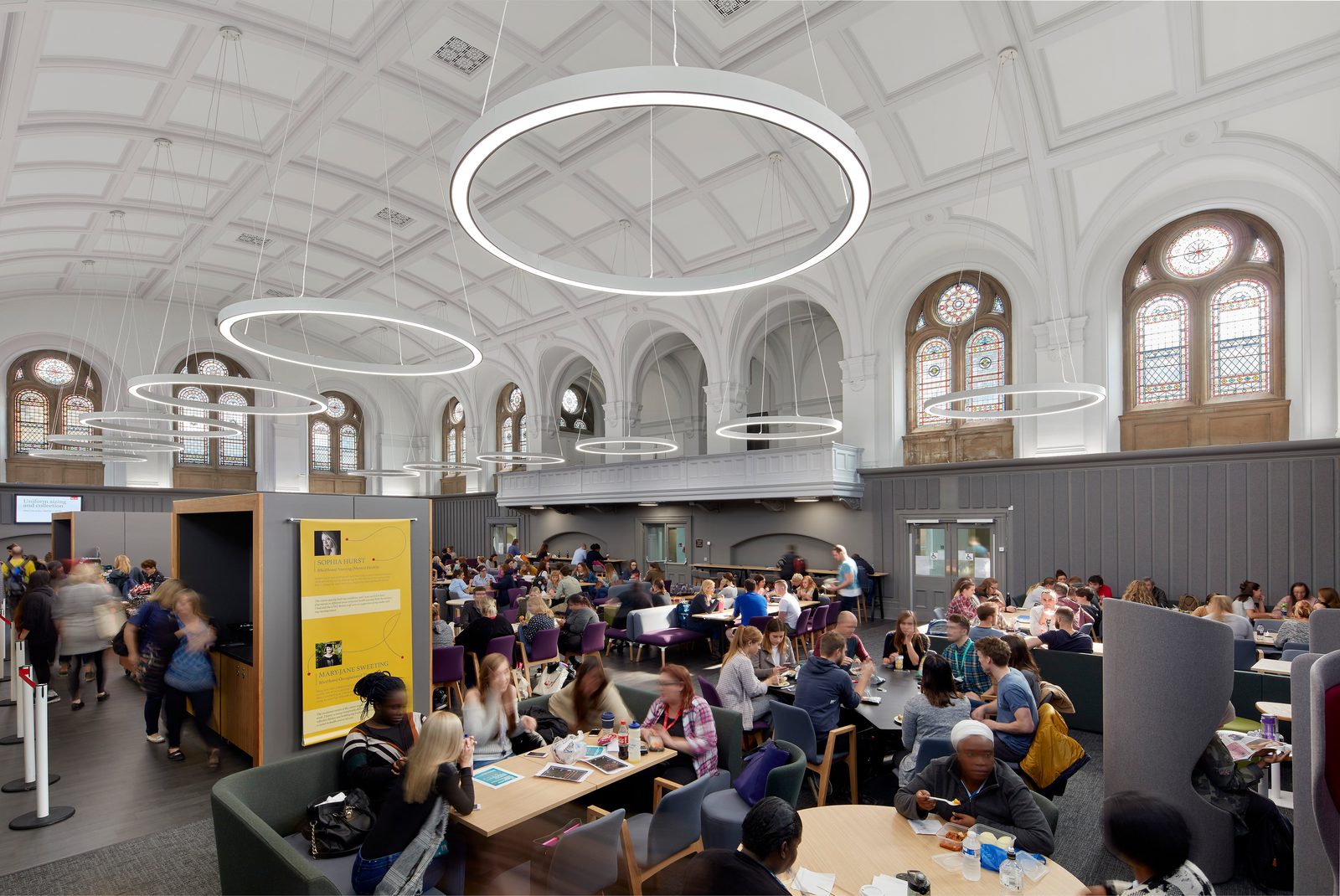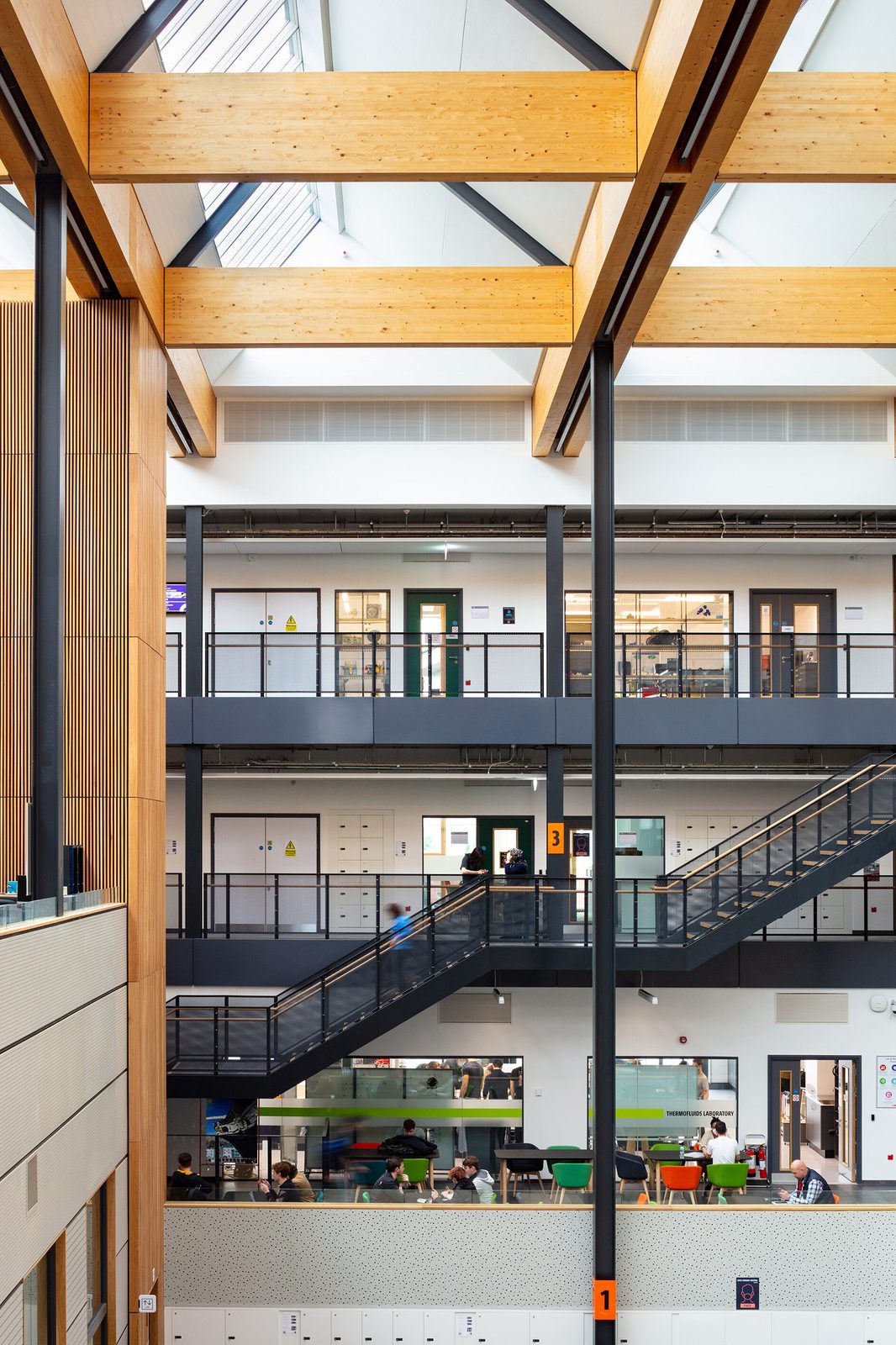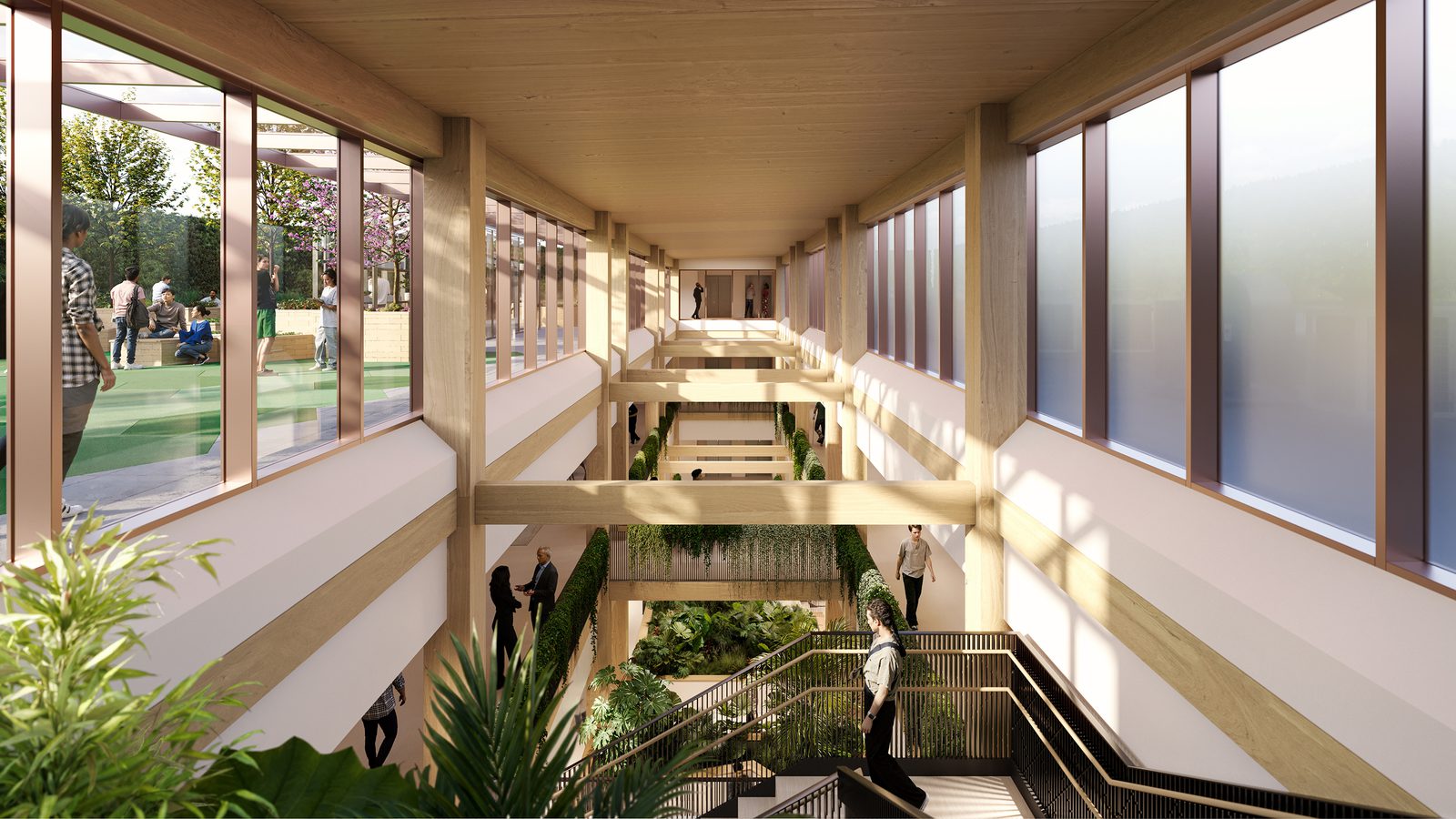
Thought Leadership
Optimising university estates to enhance the student experience
by AHR
As competition among universities intensifies, the role of the campus estate in shaping student experience has never been more important.
The physical environment, ranging from cutting-edge learning spaces to vibrant campus life, plays a critical role in designing for the student experience. With student expectations evolving, universities are considering how their estates can be developed and refined to support modern learning, wellbeing, and community needs. A well-planned university estate strategy can help institutions remain competitive, while also fostering an environment that meets current and future demands.
We understand the challenges of aligning estate planning with the evolving needs of students. Our design approach is focused on ensuring that campuses provide adaptable spaces that enhance the student experience, integrating academic, social, and wellbeing facilities in a sustainable, financially viable way.
We have worked with the University of the West of England (UWE) to develop a campus masterplan that will in the future deliver a campus that will excite, inspire, motivate and attract students, staff, employers and other partners.
In this article we explore some of the key themes to be addressed when developing such a masterplan.
Improving university estate quality to enhance the student experience
The quality of the estate significantly impacts how students experience university life. Thoughtful design can make a big difference in areas such as arrival experiences, wayfinding, and the overall aesthetic and functionality of spaces. Clear navigation, modern facilities, and spaces that foster collaboration and engagement are key factors in creating a campus that feels both welcoming and purposeful. Considering the campus as a cohesive whole, ensuring that every building and outdoor space contributes positively to student life and aligns with the university’s identity is important.
Inclusive campus design for safe, welcoming environments
Creating a safe and welcoming campus environment is a fundamental part of the student experience. This goes beyond physical safety to include emotional wellbeing and inclusivity. Prioritising accessible and inclusive campus design, 24/7/365 use, a choice of spaces for learning and socialising, and supportive environments makes all students feel welcome. A well-designed campus encourages inclusivity through features such as well-lit pathways and clear signage, which are essential for fostering a secure atmosphere. It also plays a key role in promoting wellbeing in university estates and emotional safety, ensuring that students from all backgrounds and identities feel comfortable and valued.
relevant project examples
Sustainable university campuses for future-proofed estates
Sustainability is becoming an increasingly important factor in students’ decisions about where to study. Universities are considering how to reduce their environmental impact while maintaining operational efficiency. Sustainable university campuses and decarbonisation, ranging from energy-efficient buildings to green transport options, not only reduces carbon output but also resonates with students’ values, contributing to a positive institutional image. As sustainability becomes integral to university strategies, campuses that adopt energy-efficient technologies, renewable energy, and low-carbon initiatives will be better equipped to meet future challenges.
We discuss this in more detail in our podcast episode exploring pragmatic solutions that universities can use to meet their sustainability goals.
Creating spaces for lifelong learning
As the higher education landscape evolves, many universities are expanding their offerings to cater to a broader range of learners, such as professionals seeking continuing professional development (CPD) or executive education. These mature learners often have different expectations from the traditional student body, especially when it comes to conference facilities, professional meeting rooms, and even on-campus accommodation for overnight stays. Designing lifelong learning spaces that blend learning and professional environments can be more attractive to this demographic, while supporting long-term estate strategy.
Inclusive campus design supporting student experiences spaces
Inclusive campus design goes beyond meeting basic accessibility requirements for students with disabilities; it also takes into account students from diverse cultural, faith, and socioeconomic backgrounds. This means designing inclusive spaces that foster a sense of belonging for all students, including providing sensory-friendly spaces, quiet study areas, and adaptable environments for students with neurodiverse needs, as well as facilities that respect the needs of different cultural and faith groups. Integrating inclusive campus design into university estate planning can improve the overall student experience and support retention across diverse student populations.
relevant project examples
Public realm and green spaces in university estate design
The public realm is just as important as the buildings themselves. These outdoor spaces, green areas, and social hubs create environments for students to relax, collaborate, and engage with one another. Providing outdoor learning environments, sustainable landscaping, and spaces for recreation can have a positive impact on both mental and physical wellbeing. These areas foster a sense of community and contribute to a balanced, enriching university experience.
Creating belonging through campus masterplanning
The design of a university campus plays a vital role in expressing an institution’s values and academic identity, while creating welcoming environments where students feel they belong. A clear sense of place can be achieved through carefully curated campus masterplanning that bring together meaningful public spaces, distinct architectural moments, and design choices that reflect the student experience. Whether through informal social areas, public art, or inclusive shared spaces, campuses can foster stronger connections between people and place.
These connections are important, not only for enriching daily campus life but for supporting student wellbeing and retention. According to recent data from the Student Loans Company, there has been a 28% increase over five years in students who began courses but did not complete them with mental health challenges cited as one reason for this . The University of West England has found those that do leave it is often within the first few months. Thoughtful design that promotes participation, support, and a sense of belonging can be instrumental in helping students thrive.
To find out more about our work with the University of the West of England, visit our project case study
 UWE, Blocks A-N, A benchmark for inclusive campus design
UWE, Blocks A-N, A benchmark for inclusive campus designSupporting universities with masterplanning
Optimising university estates is an ongoing process that requires careful campus masterplanning and a clear vision for the future. Universities that invest in a robust university estate strategy ensure that their estates support academic and social needs while providing sustainable and inclusive spaces.We partner with universities to deliver optimised campus masterplans that enhance the student experience, reduce carbon, and future-proof estate strategies.
Explore our higher education projects, masterplanning services and sustainability insights to see how we support universities in optimising their estates for long-term success.
Frequently asked questions
1. Why is optimising university estates important?
Optimising university estates helps institutions stay competitive, improves student experience, and ensures campuses are sustainable, inclusive and resilient.
2. How do university estates shape the student experience?
The quality, design and inclusivity of estates influence how students learn, socialise and feel supported, which directly impacts wellbeing, belonging and retention.
3. What is a university estate strategy?
A university estate strategy is a long-term plan that integrates academic, social and wellbeing needs with financial, environmental and operational goals.
4. How does inclusive campus design improve student experience?
Inclusive campus design provides accessible, culturally sensitive and neurodiverse-friendly spaces that make all students feel welcome and supported.
5. Why is sustainability critical in university estate design?
Sustainable university campuses reduce carbon emissions, improve efficiency and align with student values, strengthening reputation and long-term resilience.
6. What are lifelong learning spaces in universities?
Lifelong learning spaces cater to professionals seeking CPD or executive education, offering flexible learning, conferencing and accommodation facilities.
7. How does campus masterplanning support universities?
Campus masterplanning ensures estates are cohesive, adaptable and future-proof, aligning design decisions with institutional identity and student needs.
Posted on:
Jul 15th 2025
Topics:
Share on
Related Articles

Thought Leadership
People first: Designing for community and identity
We explore the social dimension of placemaking and how inclusive design, meaningful engagement and cultural identity contribute to environments that are enriching and enduring.
Date: 7 Jul 25
by AHR

Thought Leadership
Built for breakthroughs: Designing the future of life sciences in the UK
The UK’s life sciences sector is entering a new phase of opportunity. After a challenging 2024, where tenant demand slowed and funding became more selective, optimism is returning for 2025–26.
Date: 29 Jun 25
by AHR

Thought Leadership
Healthy Buildings: Going Beyond Performance
Designed for wellbeing and sustainability, healthy buildings create spaces that inspire comfort, happiness, and productivity.
Date: 22 May 25
by AHR

Thought Leadership
Boosting university income streams through collaborations with developers and local authorities
Universities face mounting financial pressures, many are turning to strategic partnerships with local authorities and private-sector developers.
Date: 31 Mar 25
